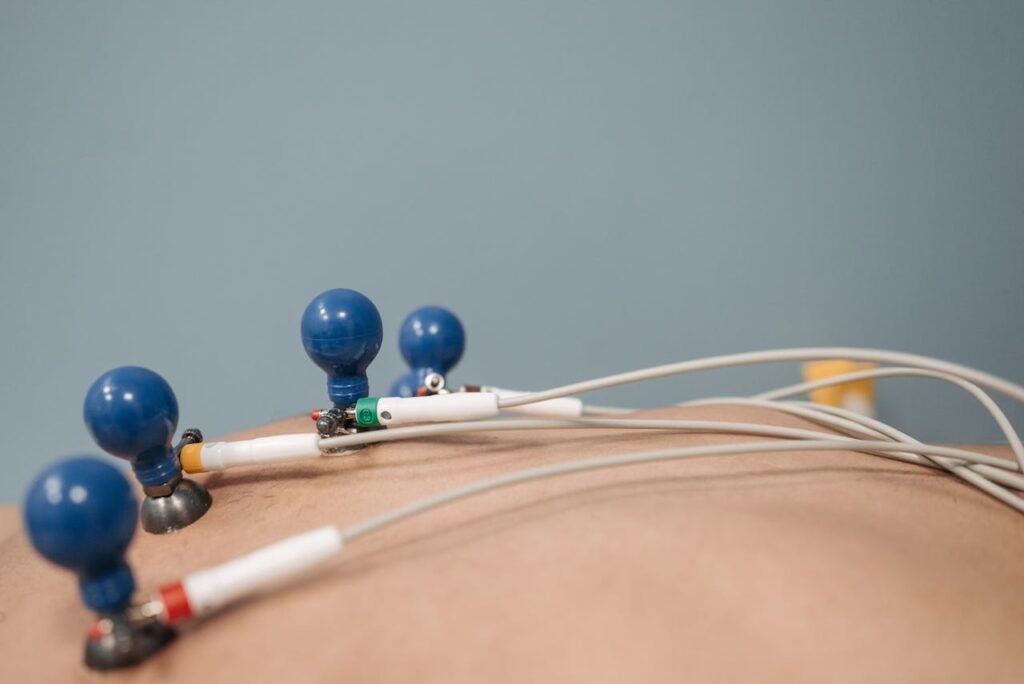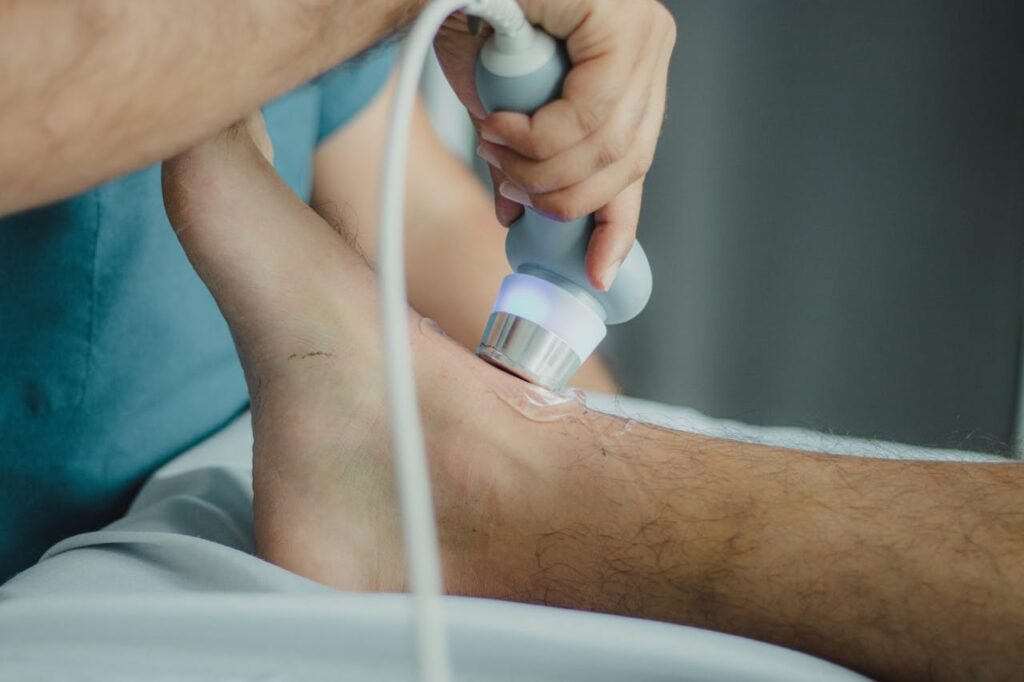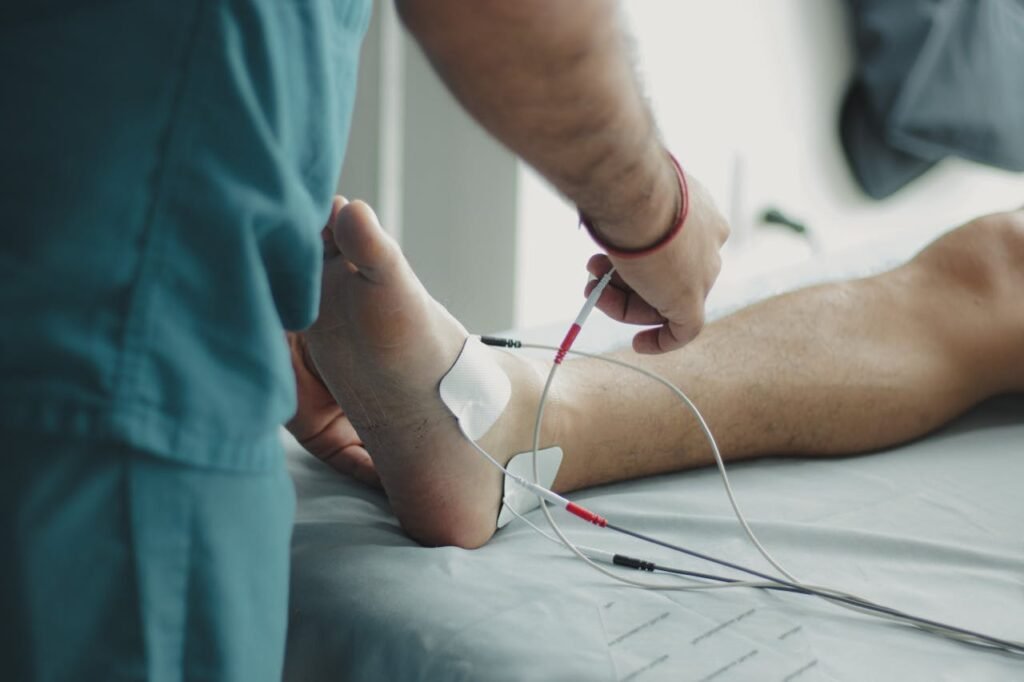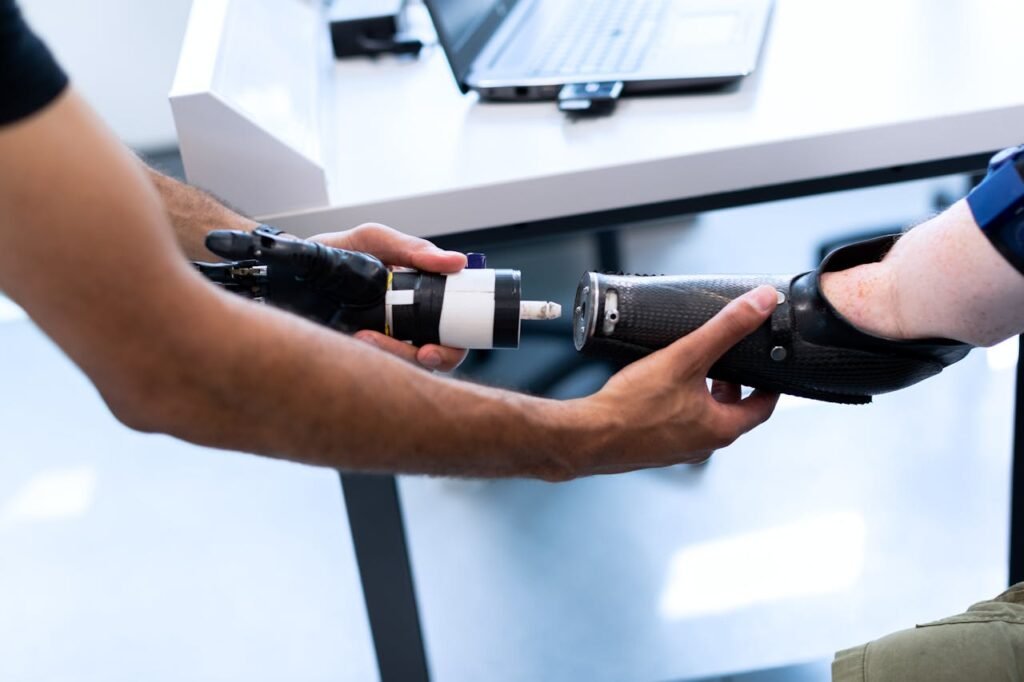Losing a limb is life-changing. It affects how you move, how you feel, and how you live each day. But recovery is possible. And one tool that’s helping more and more amputees in India is EMS—Electronic Muscle Stimulation.
For many people, going to a clinic every day is not easy. Travel takes time. Therapy can be expensive. And long waiting times can slow your recovery. That’s why home-based EMS is becoming a powerful option.
This article will guide you through everything you need to know about using EMS at home—especially for amputees in India. We’ll talk about how it works, how to use it safely, what to look for in a device, and how to make it affordable.
You’ll find helpful advice, real examples, and step-by-step tips—all in simple language.
Let’s begin your journey to healing, strength, and confidence.
Understanding EMS for Amputees
What Is EMS?

EMS, or Electronic Muscle Stimulation, is a gentle therapy that uses small electrical signals to make your muscles move. These signals help your body do what it sometimes can’t do on its own—especially after an amputation.
It feels like a light tapping or pulsing on the skin. Underneath, it helps the muscles contract and relax, just like natural movement.
Why EMS Matters After Amputation
After losing a limb, the muscles in the remaining part of the limb can become weak. Without regular movement, they start to shrink. This makes it harder to fit a prosthetic or walk with balance.
EMS helps keep those muscles alive and active. It trains them to stay strong, flexible, and ready for future movement.
It also helps reduce pain, increase blood flow, and improve nerve connection. This is why EMS is often used in hospitals and rehab centers during early recovery.
Preparing the Body for a Prosthetic
Before you wear a prosthetic, your residual limb must be stable. EMS prepares your muscles and tissues for this.
When muscles are well-toned and responsive, you get better control over your prosthetic. You can lift, grab, or walk more naturally.
That’s why EMS is often recommended in the early weeks and months after surgery.
Benefits of Home-Based EMS for Amputees
Convenience and Comfort
Going to a clinic every day is tiring—especially if you live far or don’t have easy transport. With home EMS, you can get the same therapy in your own space.
You can do it in the morning, evening, or whenever it suits your body and schedule. This makes rehab more consistent, which is key for good results.
Lower Cost Over Time
Daily trips to the clinic cost money. You pay for travel, therapist time, and session fees.
With a home EMS device, you pay once and use it many times. Over weeks or months, this becomes more affordable than repeated clinic visits.
Some companies also offer EMI or rental plans to reduce the upfront cost.
More Privacy, Less Stress
Some people feel shy or nervous about showing their limb in public. At home, you can focus fully on healing—without judgment or discomfort.
You can wear comfortable clothes, take your time, and involve family if needed.
This emotional safety is often overlooked but very important.
Better Consistency and Progress
The key to success with EMS is regular use. With a home setup, you can stick to your routine without missing sessions due to weather, transport, or clinic hours.
When you stay consistent, you build strength faster and get better results.
Choosing the Right EMS Device for Home Use
What to Look For in a Device

Not all EMS machines are the same. Some are made for beauty use. Some are made for athletes. But as an amputee, you need a medical-grade device designed for recovery.
Look for a machine that is:
- Safe and certified for rehab use
- Has adjustable intensity levels
- Offers modes for muscle strengthening and pain relief
- Easy to use with clear instructions
- Comes with quality electrodes that fit well
The device should also be backed by real support—like guides, videos, or help from trained staff if you need it.
Portable vs. Stationary Machines
Portable machines are lightweight and can be used while sitting, lying down, or even traveling. These are great for home use.
Stationary machines are larger and often found in clinics. They may offer more features, but they are not always needed for simple home therapy.
Unless you have complex rehab needs, a portable machine is usually enough.
Safety Features to Consider
Your EMS device should include:
- A timer to prevent overuse
- Auto shut-off if not used properly
- Soft pads that do not harm the skin
- Safe current levels that cannot be increased beyond a safe limit
If a device does not clearly mention these features, it’s best to avoid it.
How to Use EMS at Home Safely
Start With a Doctor or Therapist’s Advice
Before starting EMS at home, talk to your doctor or physiotherapist. They know your condition best and can guide you on where to place the electrodes, how strong the pulses should be, and how often to use the device.
Even if the machine looks easy to use, your safety comes first. A short consultation can make a big difference.
If you’re a Robobionics user, we can help connect you with trained rehab professionals who understand how to use EMS for amputee care.
Clean and Prepare Your Skin
Before every session, clean the area where you’ll place the EMS pads. Make sure the skin is dry and free of oil or lotion. This helps the pads stick better and prevents skin irritation.
If you have cuts, rashes, or infections on your skin, skip EMS until the area is healed.
Pads should never be placed over open wounds or directly on bones. They should go on soft muscle areas only.
Follow the Right Settings
Most EMS machines have different settings for different goals—like pain relief, muscle training, or relaxation.
Don’t guess. Start with the lowest level and slowly increase as your body adjusts. You should feel the muscle contracting gently but without pain.
Use short sessions in the beginning—10 to 15 minutes—and increase as advised.
If your hand or leg jumps too much or feels sore afterward, the setting is likely too high. Reduce it and talk to your therapist.
Be Consistent, Not Overactive
Using EMS once in a while won’t help much. But using it too often can also stress your muscles.
Stick to the plan—usually once or twice a day, depending on your stage of recovery. Keep a small notebook or app log to track your sessions.
The more consistent you are, the better your results. Treat it like brushing your teeth—just part of your daily care routine.
Watch for Skin Reactions
After each session, check your skin. If it’s red or itchy where the pads were, clean the area with water and wait before your next session.
Replace worn-out pads on time. Don’t use broken wires or sticky gel that has dried up. If your machine starts acting differently, stop and ask for help.
At Robobionics, we provide guidance and support for every customer using BrawnBand. If you’re ever unsure, you can reach out to our support team directly.
Real-Life Examples: EMS at Home for Indian Amputees
Nisha’s Story: Regaining Arm Strength After Surgery

Nisha, a 28-year-old from Nagpur, lost her lower arm in an accident. After the surgery, she found it hard to visit a clinic daily. She also felt awkward in public.
She began using BrawnBand EMS at home, guided by her physiotherapist. Over three months, she saw big changes—less pain, better grip strength, and more confidence.
Her muscles stayed strong, and she felt ready when her prosthetic fitting began.
Ramesh’s Story: Preparing for a Prosthetic Leg
Ramesh, a retired schoolteacher from Kerala, had a below-knee amputation due to diabetes. He struggled to keep his stump muscles active and was losing balance.
His daughter helped him set up a home EMS routine. They followed a simple plan—20 minutes each evening, with low-intensity pulses.
He saw improved control in his leg muscles and was able to walk better with his prosthetic within six weeks of starting EMS.
Arjun’s Story: Dealing With Phantom Pain
Phantom pain is when you feel pain in a limb that is no longer there. Arjun, a 35-year-old engineer in Hyderabad, faced this after a bike accident.
Along with rehab therapy, he used EMS for pain relief. Gentle electrical stimulation on the surrounding muscles helped reduce the pain signals his brain was receiving.
Today, Arjun uses EMS three times a week and says it’s made his recovery journey smoother.
Making Home EMS Affordable in India
Choosing Value Over Price
In India, cost is often a big concern when it comes to healthcare. Many families look for the cheapest option, but with EMS, quality matters more than price.
A low-cost machine that breaks down or doesn’t work properly can delay your recovery. It can even cause harm if it doesn’t control current properly.
Instead, look for devices that are reasonably priced but built for medical use. These may not be the cheapest, but they offer safety, results, and peace of mind.
At Robobionics, we designed BrawnBand to be both affordable and medically sound—suitable for real Indian rehab needs, without the hefty cost of imported machines.
One-Time Purchase vs. Long-Term Clinic Costs
Let’s compare. A single EMS session at a clinic might cost ₹500 to ₹800. If you go three times a week, that’s ₹6,000 to ₹10,000 a month.
Now, if you buy a home-use EMS device for ₹15,000 to ₹25,000, it pays for itself in just two or three months.
You save on travel, waiting time, and session charges. And you get the freedom to use it anytime.
This is why many Indian families are now choosing to invest in their own EMS device, especially when long-term rehab is needed.
EMI and Rental Plans
Still worried about the upfront cost? Some companies, including Robobionics, offer EMI options or rental models.
With EMI, you can pay in easy monthly installments—just like you would for a phone or TV. This makes medical rehab tools more accessible.
Rental plans are great for short-term use. If you only need EMS for 1–2 months, renting may be more economical than buying.
Ask your device provider about flexible payment choices. A good company will always help you find a plan that fits your budget.
Look for Support, Not Just a Product
When you buy an EMS device, you’re not just buying hardware. You’re starting a healing journey.
Choose a provider who offers support—like demo sessions, therapy plans, customer care, and follow-up guidance.
If something breaks, or if you’re unsure how to use a setting, you should be able to call or message someone who understands.
This is where Robobionics stands out. We don’t just sell devices. We walk with you through your rehab journey, offering human support when you need it most.
How to Build a Home Routine With EMS
Create a Simple, Repeatable Plan

Start small. Choose a time that suits your daily rhythm—morning, evening, or after meals. Use a notebook or calendar to mark your sessions.
Don’t worry about doing everything perfectly. The goal is to stay regular.
Even 15 minutes a day can bring visible progress in a few weeks.
Combine EMS With Gentle Movement
EMS works best when combined with light exercise. After your session, try stretching, balance training, or using your prosthetic limb for a short walk.
This helps the brain and muscles work together. It also helps you adjust to your new limb or movement style more smoothly.
Ask your therapist to show you exercises that go well with EMS.
Involve Family or Caregivers
Recovery is not a solo journey. Ask a family member to help you set up the device, apply the pads, or keep time.
When someone joins you, it becomes easier to stay motivated and consistent.
It also helps them understand your journey better, which builds emotional support.
Track Your Progress Weekly
Keep it simple. Note how many sessions you did, how you felt, and any changes in movement, strength, or pain.
Over time, this log becomes a powerful motivator. You’ll start to see how small efforts add up.
When you visit your doctor or therapist, show them your progress. They can then adjust your plan to keep you improving.
When to Stop, Pause, or Change Your EMS Routine
Signs You Should Take a Break
While EMS is helpful, your body still needs rest. If you start feeling soreness that doesn’t go away, unusual fatigue, or irritation around the pad area, pause for a day or two.
Pain during sessions is not normal. EMS should feel like a strong pull or gentle pulse—not burning or cramping. If it does, reduce the setting or stop and get advice.
Taking a short break doesn’t slow your progress. In fact, it gives your muscles time to rebuild stronger.
When to Adjust Your Plan
As your body heals, your needs change. What worked for the first month may not work the same after three months.
You might need higher intensity, longer sessions, or new pad positions. You may also need to reduce the frequency if you’re doing other physical therapy.
A good rule is to check in with a therapist every 4–6 weeks. They can update your EMS plan based on your progress and future goals.
When to Stop Completely
If you’ve regained enough muscle tone, strength, or prosthetic control, you may no longer need EMS regularly.
Some people stop completely. Others reduce their sessions to once a week for maintenance.
There’s no fixed rule. Listen to your body and let your rehab team guide you.
EMS for Amputees: Beyond Physical Benefits
Boosting Confidence and Independence
Many amputees say EMS helped them feel in control again. Instead of waiting passively for muscles to return, EMS lets you do something active for your healing.
You see small wins—like better grip, smoother walking, or less pain—which gives hope and confidence.
When used with care, EMS becomes more than therapy. It becomes a daily reminder that your recovery is in your hands.
Reducing Stress and Mental Fatigue
Living with limb loss can be emotionally draining. There’s fear, doubt, and sadness at times. EMS adds a sense of routine and structure to your day.
Short daily sessions offer quiet moments of focus. Many users find it calming. It gives the brain something clear and purposeful to do—like a task you can complete successfully.
This helps lower mental stress and creates a sense of progress.
Reconnecting With Your Body
After amputation, many people feel disconnected from their limb or body. EMS helps restore that connection.
When you see the muscle move again—even slightly—you feel reconnected with your body. It brings back trust in movement, sensation, and strength.
This is a powerful emotional step in recovery.
Why Robobionics Believes in Home EMS
Made in India, for Indian Rehab Needs

At Robobionics, we understand the Indian healthcare reality. Long travel times. High therapy costs. Limited access in rural areas. And families that need affordable, practical solutions.
That’s why we created BrawnBand—our portable EMS device built with Indian patients in mind. It’s simple to use, medically approved, and designed for safe home care.
We manufacture locally, keeping costs fair and support close to home.
Support That Stays With You
When you choose Robobionics, you’re not just buying a machine. You’re gaining a team.
We help you set up your EMS routine, guide your first sessions, and answer your questions. We connect you with therapists when needed, and support you through your full journey.
Our goal is not just sales—it’s strength, confidence, and healing.
Helping Amputees Across India
We’ve seen hundreds of amputees regain muscle strength, balance, and freedom through home EMS. From rural Maharashtra to city hospitals in Delhi, our device is used in clinics, homes, and rehab centers across the country.
Each story reminds us: when people are empowered with the right tools, they can rebuild their lives.
Final Thoughts: Healing at Home Is Possible
Using EMS at home is more than just a cost-saving idea. It’s a way to take back control over your body, time, and recovery.
It lets you grow stronger in your own space, on your own terms. With the right guidance and the right device, you don’t need to rely only on clinics or long hospital stays.
If you or someone you love is recovering from amputation, we encourage you to explore home EMS with confidence. It’s safe. It’s effective. And it’s made for real life.
At Robobionics, we’re here to support you every step of the way.
You can book a free EMS demo and talk to our experts at https://www.robobionics.in/bookdemo
Let’s take recovery home. Let’s bring strength back to where it matters most.



